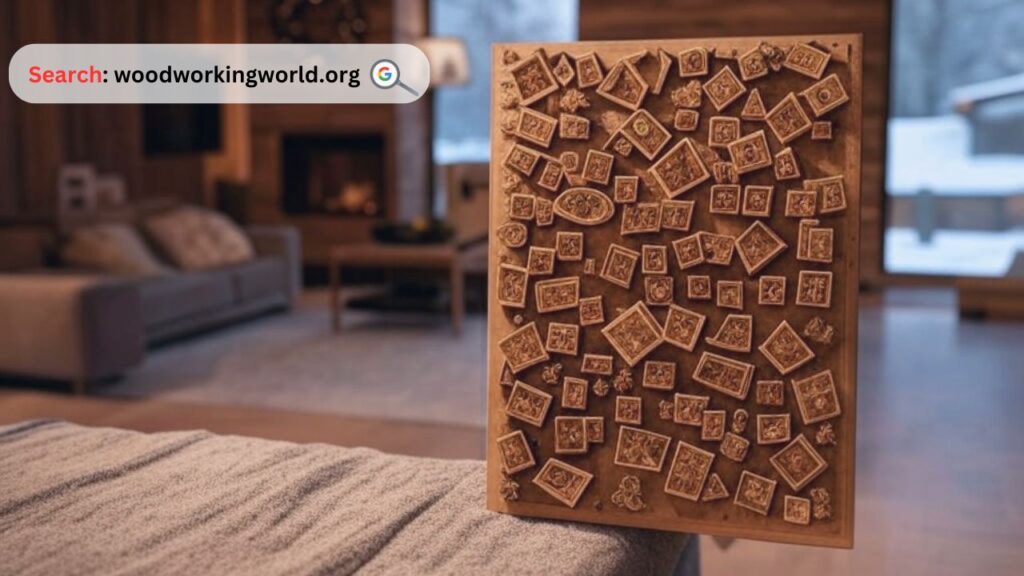Unlock Fun Daily with a Puzzle Advent Calendar! Enjoy a new challenge every day & make the countdown exciting. Discover the best picks—read now!
“The kitchen is the heart of the home.” This timeless adage underscores the importance of creating a space that’s both functional and aesthetically pleasing. One transformative way to achieve this is by incorporating an accent wall into your kitchen design. An accent wall can infuse character, warmth, and a personalized touch, making your kitchen truly stand out.

Introduction
In interior design, an accent wall serves as a focal point, drawing attention and adding depth to a room. In kitchens, where cabinetry and appliances dominate, an accent wall offers a unique opportunity to introduce color, texture, and pattern. Whether you’re renovating an existing space or designing a new one, an accent wall can elevate your kitchen’s ambiance and reflect your personal style.
Benefits of a Kitchen Accent Wall
- Visual Interest: Breaks the monotony of uniform walls, introducing a captivating element.
- Personal Expression: Showcases your taste through colors, materials, or artwork.
- Enhanced Space Perception: Strategic designs can make the kitchen appear larger or more intimate.
- Cost-Effective Update: Revamps the kitchen’s look without a complete overhaul.
👉 Build 16,000+ Projects with Step-by-Step Plans—No Big Workshop or Costly Tools Needed! Start Now!
Step-by-Step Guide to Creating a Kitchen Accent Wall
Embarking on the journey to create a kitchen accent wall involves careful planning and execution. Here’s a comprehensive guide to assist you:
1. Assess Your Space
Evaluate your kitchen’s layout to determine which wall would best serve as the accent. Typically, it’s a wall free of cabinets and major appliances, allowing the design to shine.
2. Choose the Right Material
The material sets the tone for your accent wall. Consider the following options:
- Paint: A simple yet effective choice. Opt for bold colors to make a statement or subtle hues for a gentle contrast.
- Wallpaper: Offers patterns and textures, from classic designs to modern geometrics.
- Tile: Durable and easy to clean, tiles come in various styles, including subway, mosaic, and patterned designs.
- Wood Paneling: Adds warmth and a rustic charm, suitable for farmhouse or traditional kitchens.
- Stone or Brick Veneer: Introduces a natural, textured element, perfect for industrial or rustic themes.
3. Select a Color Palette
Your chosen colors should complement existing kitchen elements:
- Contrast: For a striking effect, select a color opposite to your primary kitchen colors on the color wheel.
- Complement: Harmonize with existing hues for a cohesive look.
- Neutral Tones: Shades like beige, gray, or white offer timeless elegance and versatility.
4. Prepare the Wall
Proper preparation ensures longevity and a polished finish:
- Clean the Surface: Remove grease, dust, and stains.
- Repair Imperfections: Fill holes or cracks with appropriate fillers.
- Prime the Wall: Especially crucial when applying paint or wallpaper to ensure better adhesion and true color representation.
5. Installation Process
Depending on your chosen material:
- Painting:
- Tape Off Areas: Protect adjacent surfaces with painter’s tape.
- Apply Paint Evenly: Use rollers for large areas and brushes for edges.
- Multiple Coats: Apply additional coats as needed, allowing drying time between each.
- Wallpapering:
- Measure and Cut: Ensure patterns align seamlessly.
- Apply Adhesive: Follow manufacturer instructions.
- Smooth Out Bubbles: Use a squeegee or wallpaper brush.
- Tiling:
- Plan Layout: Dry-fit tiles to visualize the arrangement.
- Apply Mortar: Use a notched trowel for even distribution.
- Place Tiles: Insert spacers for uniform gaps.
- Grout and Seal: Fill gaps and protect against moisture.
- Wood Paneling:
- Acclimate Wood: Let panels adjust to room temperature and humidity.
- Secure Panels: Use nails or adhesive, ensuring alignment.
- Finish Surface: Stain or paint as desired.
6. Accessorize Thoughtfully
Enhance your accent wall with complementary elements:
- Open Shelving: Displays dishware or decor items.
- Artwork or Mirrors: Adds personality and can make the space feel larger.
- Lighting Fixtures: Highlight the wall and create ambiance.
Expert tips on Woodworking 🌿📦 Watch now!

Comparison of Accent Wall Materials
Choosing the right material is pivotal. Here’s a comparison to aid your decision:
| Material | Pros | Cons |
|---|---|---|
| Paint | Affordable, easy to apply, vast color options | Prone to stains, may require frequent touch-ups |
| Wallpaper | Diverse patterns/textures, customizable | Can peel in humid areas, installation can be tricky |
| Tile | Durable, easy to clean, heat-resistant | Higher cost, professional installation recommended |
| Wood Paneling | Adds warmth, natural aesthetic | Susceptible to moisture damage, may need regular maintenance |
| Stone/Brick | Unique texture, durable | Heavy, can be expensive, requires proper sealing |

Inspirational Ideas for Kitchen Accent Walls
- Geometric Patterns: Use paint or wallpaper to introduce modern designs.
- Bold Colors: A deep navy or vibrant red wall can create a dramatic focal point.
👉 Click To Order Teds Woodworking With A 60-Money-back Guarantee From – Official Website